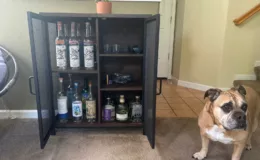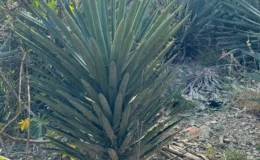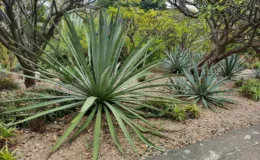Mezcal has been deeply intertwined with Mexican culture and traditions for centuries. Its unique smoky flavor, derived from the process of roasting the agave hearts in underground pits, is one of its signature attributes. But how is mezcal made?
In this article, we will show you the production process step by step, exploring each phase in detail and discussing the variations that impact the end product.
The process of mezcal production
Mezcal production is a labor-intensive process that involves several steps, each with its own personal touch. The process begins with the cultivation of the agave plant, which can take anywhere from five to 35 years to mature.
Once mature, the agave plant is harvested, with the leaves cut off to reveal the piña, the heart of the plant. The piñas are then roasted in an earthen pit, caramelizing the natural sugars and giving mezcal its distinct smoky flavor. After roasting, the piñas are crushed to extract the juice, which is then fermented into alcohol.
The alcohol is distilled, often in clay or wood stills, and then rested for several months to a year to allow the flavors to develop.
Step-by-Step Explanation of the Mezcal Production Process
1. Growing
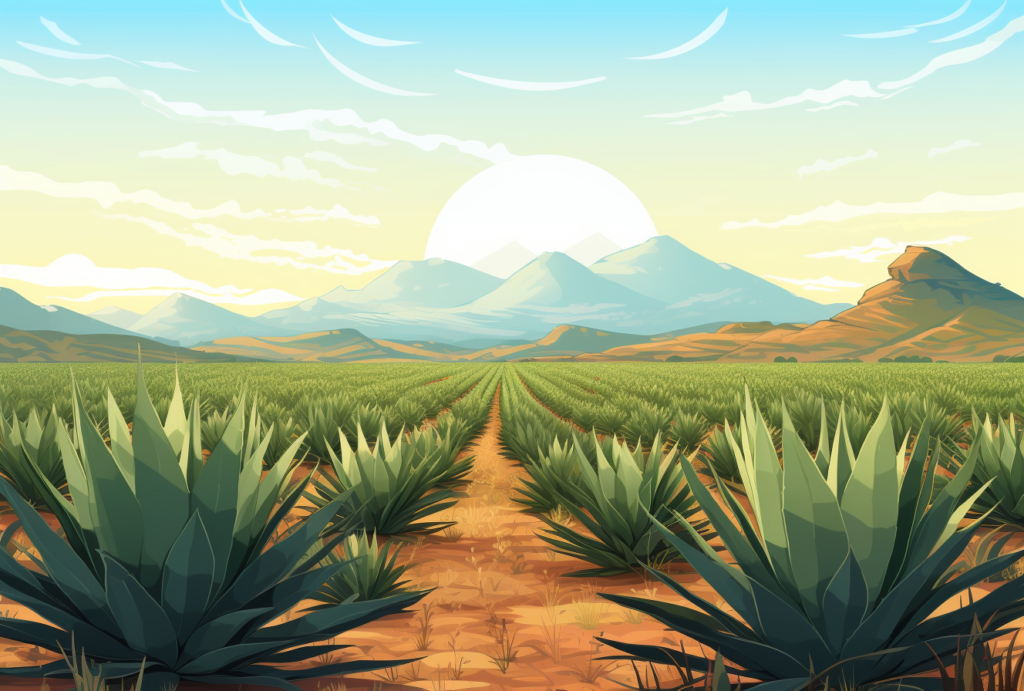
Unlike Tequila, which is made from only one type of agave, Mezcal can be made from many different types of agave. There are over 300 species of agave that can be used for mezcal production, each with its own unique flavor profile. On top of that, the conditions under which the agave is grown, including weather patterns and soil composition, significantly affect the final sugar and mineral contents of the maguey, and thus the flavor of the mezcal.
2. Harvesting
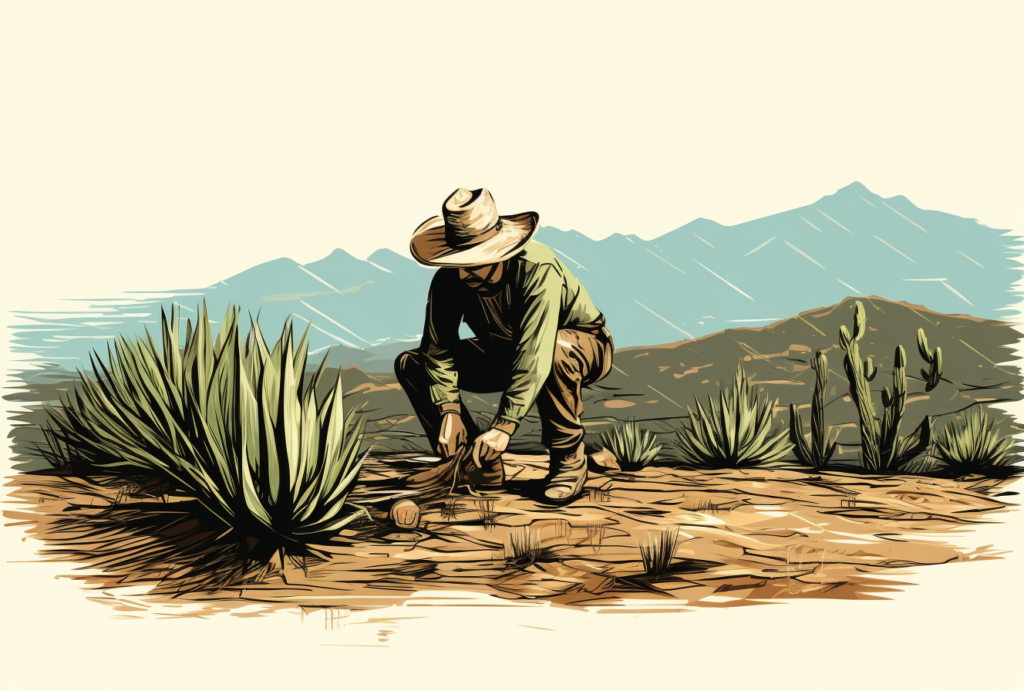
The matured agave plant is harvested by cutting off the leaves to reveal the piña, the heart of the plant. Espadín is the only cultivated maguey used to make mezcal, all other types still grow wild and sometimes in very hard-to-reach places.
3. Cooking
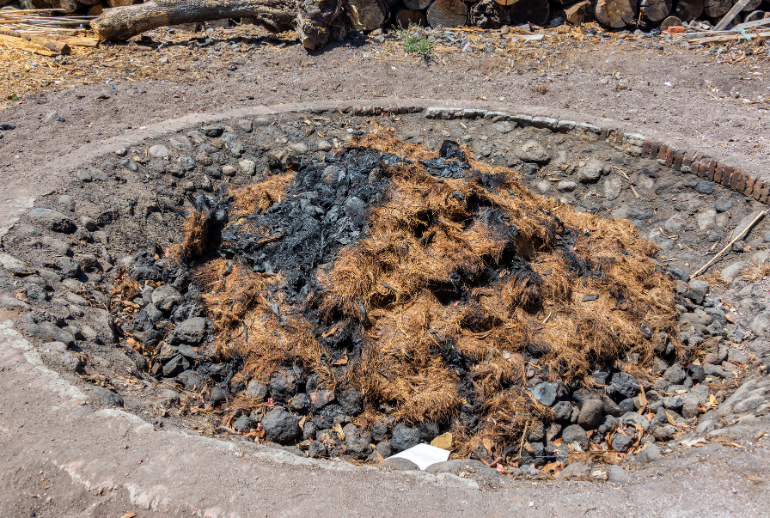
Traditionally, respected mezcaleros use an earthen pit for cooking the agave. The pit is lined with wood from local trees and heavy volcanic rock or stones that will retain heat after the fire is lit. The piñas are then arranged in layers, covered with earth and agave leaves, and left to roast for several days. The roasting process caramelizes the natural sugars in the piñas, giving the mezcal its distinct smoky flavor.
4. Milling
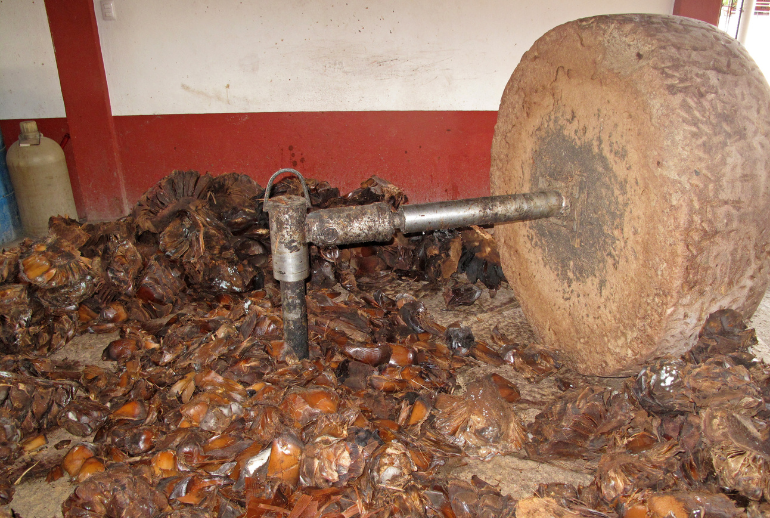
Once the piñas have been roasted, they are crushed or milled to extract the juice, which is then fermented. Ancestral and artisanal mezcal producers typically use a tahona, or macerate the cooked agave by hand using wooden mallets. Larger producers in the “mezcal” category are allowed the use of a roller mill or even a diffuser.
5. Fermentation
After the agaves are crushed, the fibers and juices are fermented into alcohol using naturally occurring yeasts. Fermentation duration varies based on temperature and humidity, ranging from a few days to weeks. The duration of this process also has an effect on the overall flavor profile.
6. Distillation
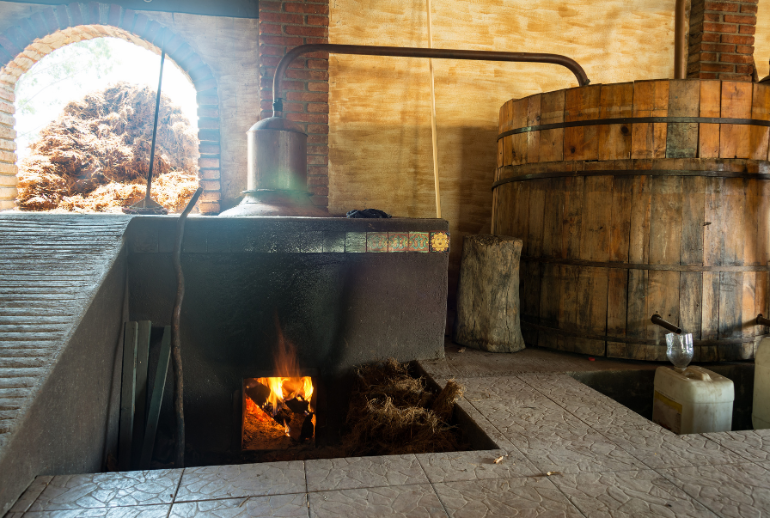
Mezcal distillation is a traditional and artisanal process. Most producers use clay or wood stills heated by direct fire, often with materials from the surrounding environment. These stills are much smaller than modern ones, making batches unique and limited. During distillation, the alcohol content is determined by the structure and lasting ability of bubbles. Typically, mezcals undergo two rounds of distillation.
A special type of mezcal, known as “pechuga”, undergoes a third distillation. In this process, a raw chicken or turkey breast (pechuga in Spanish) is hung over the still, and fruits, grains, and nuts are added to the distillation. As the spirit vapors pass over the meat during this third distillation, they mellow and soften, taking on subtle flavors from the ingredients. The result is a mezcal with a unique and complex flavor profile, often enjoyed during special occasions and celebrations.
7. Resting (optional)
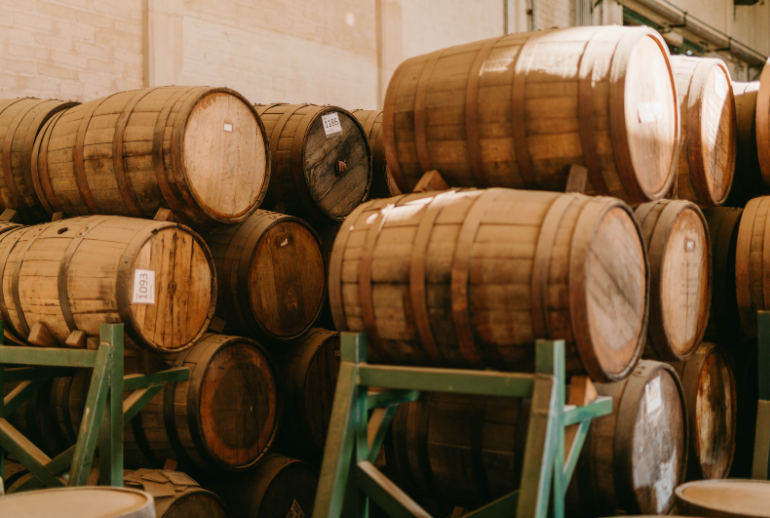
Mezcals of the most common type “Jóven” (meaning young) are now ready to be bottled. For aged types like reposado or añejo, now it’s time for the aging process.
The mezcal is rested for a period of time, typically several months to a year, in oak barrels to allow the flavors to develop and mellow.
Variations in the Production Process
The variations in the production process can significantly impact the end product. For example, the type of fuel, wood, and the proximity to the direct heat all play a part in the cooking process, in addition to the construction of the pit itself. Similarly, the type of still used in distillation, whether clay or wood, can influence the flavor of the mezcal.
Industrial, Artisanal, and Ancestral Mezcal
There are three main categories of mezcal:
– industrial
– artisanal
– ancestral
Industrial mezcal is made on a large scale using modern equipment, while artisanal mezcal is made using traditional techniques to produce good quality mezcal for the international market. Ancestral mezcal only uses underground ovens, natural fermentation, and small stills, often clay stills. These mezcals tend to be above 45% alcohol by volume.
The Palenque: The heart of the mezcal production
A palenque is a traditional distillery where mezcal is produced. It is often a small, family-run operation where the mezcaleros, or mezcal makers, follow traditional methods passed down through generations. The palenque is an integral part of the mezcal production process, and it is here that the agave plant is transformed into our beloved mezcal.
If you’re ever in Oaxaca, the heart of mezcal country, you should definitelly check out the local palenques. A lot of them offer tours where you can see up close how mezcal is made.

You’ll get to stroll through fields of agave, see how they roast and distill the plant, and of course, taste the good stuff straight from the source. It’s a great way to learn about the hard work and tradition that goes into every bottle of mezcal. Plus, by visiting, you’re supporting the local producers who keep the art of mezcal making alive.
What is “Destilado de Agave” and why is it not called mezcal?
Due to strict regulations, some spirits made from agave cannot be labeled as mezcal. These spirits, often referred to as “Destilado de agave”, are produced using methods that do not meet the official standards for mezcal production.
For example, some producers use different types of agave or use different cooking methods, which can result in a spirit that is distinct from traditional mezcal. Despite these differences, many of these spirits are still highly regarded for their quality and unique flavors.
The production of mezcal is a complex and intricate process that requires a deep understanding of the agave plant and traditional distillation techniques. Each step in the process, from growing and harvesting the agave to cooking, milling, fermenting, distilling, and resting the spirit, plays a crucial role in creating the unique flavor profile of mezcal.
That’s how mezcal is made – can you taste it?
Understanding the production process can truly enhance your appreciation for mezcal since you will understand better what differences in the process make up for different flavor notes.


